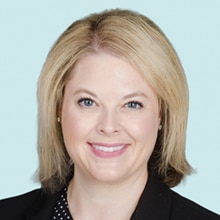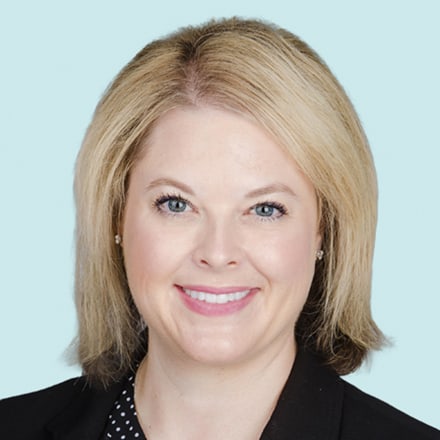Inside Angle
From 3M Health Information Systems
Three questions with Michael Bee: 3M™ 360 Encompass™ System: A look back
I sat down with 3M Health Information Systems Vice President Clinician Solutions Michael Bee to talk about the evolution of our flagship platform and how we’re automating coding at the point of capture to ensure complete and compliant documentation.
Mike, you’re known around 3M HIS as one of the grandfathers of 3M 360 Encompass. As we celebrate the platform’s 10th anniversary, tell us what problem you were trying to solve for and what were some of the early considerations?
It’s hard to believe it’s been 10 years, especially when you think about all of the advancements in technology, artificial intelligence (AI) and natural language understanding (NLU) that’s happened since then. Back in 1999, we made an acquisition in the consulting services space that gave us a foothold in the clinical documentation integrity (CDI). We started to see an opportunity to really advance the mid-revenue cycle by creating an application to make the work more seamless between CDI specialists and coding teams. We wanted them to be able to play better together.
This was right about the time the American Recovery and Reinvestment Act of 2009 (ARRA) was signed, which incentivized hospitals and physician offices to digitize operations and move to an electronic health record (EHR). The HITECH Act, part of ARRA, provided financial incentives to invest in this technology. That stimulus money greatly accelerated the adoption of EHRs and we were in the early stages of applying AI and natural language processing (NLP) to the mid-revenue cycle. We knew our coding content and expertise could help revolutionize our core business by creating an application tying revenue cycle teams together. At that time, ICD-10 was also on the horizon, so coding complexity and specificity was only going to increase, as was the need for a more intelligent CDI process. So, 3M 360 Encompass was born!
3M 360 Encompass started out as a single platform that allowed CDI teams and coding teams to work seamlessly together. It gave each of them more contextual awareness of the work that the other was doing.
Today, 3M 360 Encompass has evolved beyond CDI and facility coding to include professional fee coding, measuring quality initiatives and pushing the needle of efficiencies from an enterprise perspective with workflows. Eventually, 3M 360 Encompass will fully automate the entire coding cycle. We’ve already made great strides in that space and will continue to build upon that.
We have a saying: from capture to code. And when I think about that, it’s really the evolution of 3M and our acquisition of M*Modal. Once we were down the road of automating the revenue cycle, we asked the question: why can’t we move this upstream and influence the actual documentation while it is being created? Further innovation and integration of our 3M M*Modal technologies is making the capture to code process more automated, more compliant and more complete.
3M 360 Encompass has really defined the revenue cycle industry. Tell us more about the evolution from computer-assisted coding (CAC) to full automation.
One of the fundamental things we wanted to change about the coding world was how coders were reliant on research and memory. Coders had to read through 20-plus books worth of patient chart information during a normal day, trying to effectively do their job and make sure that the services provided were coded and reimbursed correctly. We wanted to shift the paradigm from: read, find, assign and code, to a workflow where the coder was presented with the code, and given the evidence, decide whether that code should stay or change. We wanted to turn coders from 100 percent production to as much editing as possible.
Back then, the technology wasn’t at a point where we could remove humans completely from any part of the process. But soon with autonomous coding, the technology is intelligent enough that we can help coders automate simple visits. There will always be a human component involved in coding, but with this technology, they can focus on the more complex cases instead of being bogged down by the simple ones.
And at a time when hospitals need as many resources as possible focused on delivering care, are under-resourced and facing intense margin pressure, they need all the help they can get to make sure they are being appropriately reimbursed for services provided, in the most efficient manner possible. Having a system that ensures you have complete and compliant coding is one less thing to worry about.
What were some of the trends the industry was facing 10 years ago and how have those trends changed?
One major trend that I mentioned before was the digitization of health care. We saw hospitals turn to technology for documentation as part of the health record and U.S. hospitals were adopting EHRs at an accelerated rate thanks to the financial incentives being provided. We saw hospitals climb the HIMSS Electronic Medical Record Adoption Model (EMRAM) stages more quickly to reach higher and higher levels of digitization. This meant that more information was being documented in the EHR, which meant that AI and NLP could progress and evolve in the complicated world of health care. The ICD-10 transition was also a major driver of digitization and allowed us to hone our AI and NLP even more.
If you think about early NLP, it was a rules-driven narrative technology that provided tremendous value to codes. But if you think about where we are today with the 3M M*Modal NLU, we are much more sophisticated and capable of consuming not only narratives, but structed clinical information and reasoning over information to provide insights and drive action. We’re able to do this in ways we could only dream about doing 10 years ago. That becomes more meaningful the more we interact with CDI specialists and physicians because they live in the clinical space, not the coding space.
We’re on this journey to improve health care and to help people get to 100 percent complete, compliant and accurate codes. We want them to achieve billing that accurately represents the care they are delivering, and accurately capture the severity of their patients. That mission hasn’t changed. We’re just influencing it further upstream now. We’re constantly trying to get to the point where we fix the problem where it is created versus trying to continually build stronger and stronger safety nets downstream.
Problems are much easier to solve upstream than they are downstream. And to do that, we have to get to a point where a doctor creates 100 percent complete, compliant and accurate documentation. So much of operational success, reimbursements and quality initiatives are derived from documentation of care. It can impact how a doctor is measured and how hospitals are ranked. We want to help them do it better the first time.
I mentioned capture to code earlier. As we move closer and closer to autonomous coding, it will evolve to capture to payment. It’s been a fun journey and our team remains committed now more than ever to making that process seamless for everyone involved.
Michael Bee, vice president of clinician solutions at 3M Health Information Systems.
Kelli Christman is marketing communications manager at 3M Health Information Systems.




